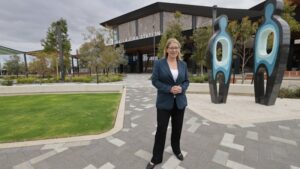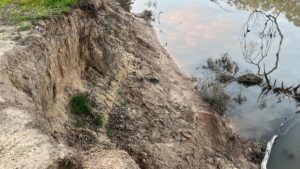
The latest findings from the 2025 State of the Beaches Report indicate significant improvements in the water quality of swimming locations across New South Wales (NSW). The report highlights that a year of average-to-below average rainfall has contributed to safer conditions for swimmers, particularly at well-known beaches like Maroubra and South Curl Curl, as well as popular harbourside spots such as Nielsen Park and Camp Cove.
Among the 249 swimming sites evaluated throughout NSW, water quality has improved at 23 locations. Furthermore, 179 sites maintained their status of ‘good’ to ‘very good’ quality. Heavy rainfall can negatively affect water quality by causing runoff from stormwater systems, which may introduce harmful contaminants into local beaches, rivers, estuaries, and lakes.
Positive Trends in Ocean Beaches and Estuarine Sites
Ocean beaches and tidal pools generally exhibited more favorable results after storm events. This is due to the natural flushing process that helps disperse and dilute pollution, enabling quicker recovery. The report shows that 95% of the 133 monitored ocean beaches in NSW received grades ranging from good to very good for water quality.
In contrast, estuarine swimming sites, which are more vulnerable to stormwater impacts following rainfall, demonstrated improvement as well. This year, 63% of these sites were graded as ‘good’ or ‘very good,’ an increase from 55% in the previous year.
Despite these positive developments, Beachwatch advises caution. Swimmers are encouraged to avoid entering the water during rainfall and for up to three days afterwards, especially if the water appears murky or is littered with debris. For real-time updates on water quality, individuals can visit the Beachwatch website at beachwatch.nsw.gov.au.
Government Commitment to Beach Monitoring
The report includes a statement from Penny Sharpe, the Minister for Climate Change and Energy, emphasizing the importance of Beachwatch as a reliable resource for swimmers. “Beachwatch is the best source of information when it comes to deciding if your local beach, swimming hole or stream is safe to swim in,” Sharpe noted. She also mentioned that the Minns Labor Government has expanded monitoring efforts to an additional 31 swimming sites in 2025.
While the report presents a positive snapshot of the state’s water quality, Sharpe urged the public to continue checking the Beachwatch website for live updates on any water pollution. “This year we have seen a great result, and we will be continuing to work hand-in-hand with councils to ensure the program continues to serve the community,” she stated.
With summer approaching, these findings offer a reassuring outlook for residents and visitors eager to enjoy the state’s beaches. The increased monitoring and improved water quality underscore ongoing efforts to maintain safe swimming conditions throughout NSW.







